Posts Tagged “sportsforce”
Payoff at Division III is Greater Than You Think
Posted by SportsForce in College, Commitments, Commitments, High School, Recruiting, Tips & Advice, tags: academic scholarship, athletic scholarship, college levels, Division I, Division III, Divison II, financial aid, grants, NCAA, sport programs, sportsforce, student athletes, student loans

In our work with families, it’s common for student-athletes to be drawn to the NCAA Division I experience. It makes sense. Whether they are true DI level student-athletes or not, that’s typically the only form of collegiate competition they see or hear about on TV or in the media.
NCAA DI and DII sports programs offer the most competitive landscape for securing roster spots and athletic scholarships. Only about 2 percent of players are offered DI or DII scholarships, and many of these are relatively small amounts. It is extremely rare for DI or DII student-athletes to secure full ride scholarships.
Due to this intense competition, it’s normal for many players at these collegiate levels to ultimately land at DIII schools. According to the NCAA, Division III is the largest division in terms of a number of schools and number of participants and is comprised of more than 190,000 student-athletes and represents 450 colleges and universities throughout the country. Division III is also the only division that does not award athletic scholarships; however, more than 75 percent of Division III student-athletes receive financial aid or have earned a merit scholarship for academic talent and accomplishment.
Although there are many, the three most often repeated benefits our families mention when attending and competing for DIII programs is that it allows the student-athlete:
- To maintain a well-rounded collegiate experience. Although the sports programs are very competitive and place a strong emphasis on winning, there is an opportunity for the student-athlete to participate in extra-curricular activities like semesters studying abroad, student government and Greek life.
- To attend strong academic institutions with advanced and well-positioned internships for future careers.
- To secure significant merit-based scholarships for academics or other special talents they may possess.
Many Division III institutions have extraordinary supplies of money to attract high-performing student-athletes and can offer exceptional value to families. Listed below is a recent email from a DIII soccer family to share as an example:
“Actually, we did quite well with her grants, scholarships, and loans…
She received the following package:
GRANTS/ SCHOLARSHIPS (four-year grants, spread equally over the four years):
- The University Scholar Award – $72,000
- Board of Directors Grant – $33,716
- Residency Grant – $8000
Total Grants: $113,716
PRE-APPROVED GUARANTEED UNIVERSITY STUDENT LOANS:
- $14,000 subsidized (no interest)
- $8000 unsubsidized (very low interest)
Total Loans: $22,000 (to be repaid after graduation and full-time employment)
WORK STUDY:
$6000 – guaranteed position in the federal work study program all four years
So they delivered a total of $141,716, which represents approximately 75% of her entire undergraduate education ($191,064), including tuition, books, room & board.
Another great bonus, based on her major (International Business), is that they will send her abroad her sophomore year… at their cost.
Finally, they guarantee graduation in four years.
As it turns, she was their top female soccer recruit, but we did not know that until after she committed (her new teammates let the cat out of the bag).
Note: She improved her GPA and her SAT scores during the application process, and she promptly notified the University, and they increased her financial package accordingly, which I also liked.
In fact, there is now one other scholarship that she is academically eligible to apply for, but she missed the February deadline (because she hadn’t even visited the school yet then, and they really weren’t even on her radar), so they sent her a letter, and they want her to apply next year (the Provost Scholarship), and if she gets it, she will get another $6000 in scholarship money ($2k per year for the last three years), and they will adjust my payments.
She is very excited for the opportunity, and I hope that it all works out for her. I will keep in touch to let you all know how she does.
Thank you for your assistance.”
Whether your son or daughter has the desire to compete in their sport at NCAA Division I, II or III college levels, Division III institutions may present significant academic and athletic opportunities that you did not know existed.
For a personal college recruiting evaluation and honest estimate of your potential to compete at the next level, contact us at:
Phone: 1.888.9787084
Email: scouting@sportsforceonline.com
Caroline Goudy Feature Athlete Interview – Committed to Elon University
Posted by SportsForce in Athlete of the Week, College, Commitments, Commitments, High School, Soccer, tags: College Coaches, college commitment, College Soccer, elon university, highschool soccer, NCAA division I, recruiting process, recruiting story, soccer scholarship, sportsforce, student athleteWe would like to congratulate Caroline Goudy on her commitment to Elon University! Here are Caroline’s recruiting story and interview after her commitment. Good luck as a Phoenix!
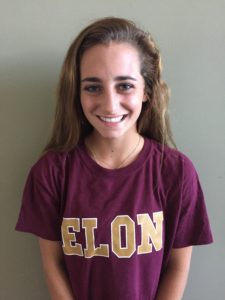

1. Share your recruiting story and status
I started my recruiting process the summer going into my junior year of high school. Truthfully, the process was pretty stressful, but with the help from the SportsForce team, the burden of emails and profile/video links was lifted. Once I found the right fit for me the process was pretty easy. I committed in March of my junior year and am looking forward to signing next year!
2. What school are you going to, and why did you choose them?
I will be attending Elon University in the fall of 2017. I chose this university because of the great academics, close relationships between the teachers and students, small classes, Division I athletics, and the beautiful campus.
3. How did SportsForce help in the process?
SportsForce helped me narrow down my options and pick the schools that fit my needs as a student-athlete. After zoning in on a handful of schools, the SportsForce team assisted me with emailing coaches before games, tournaments, ID Camps, etc., configuring my recruiting profile, and forming a video with a medley of game film highlights.
4. What advice would you give to other players and parents with the recruiting process?
I would advise any player looking to be recruited to definitely start as early as you can by going to ID camps, sending out emails, and configuring recruiting profiles and game film videos. The highlight video that was located on my profile was very helpful for coaches who were viewing my profile. The coaches were able to view my video and decide whether or not I would be a good fit for their program. Lastly, I would advise players to keep sending college coaches emails with their most recent schedules or just to say hello and update them on your game. Try to build relationships with the coaches and make them know you for your consistency and persistence.
5. How excited are you for your future in college?
I am very excited to further my academic and athletic journey at Elon University. I cannot wait to continue playing the game I love at a college that I love! I am also excited to get involved in clubs, Greek life, and form bonds with new friends, coaches, and teachers.
6. Would you recommend SportsForce to any other student-athletes? Why?
Yes, I would definitely recommend SportsForce to any student-athletes who are looking to be recruited by colleges! This team helps you narrow down your options, assists you with emails, profiles, video highlights, and guides you on how to speak with coaches personally to help promote you as a player and student.
Over the last five years, SportsForce has helped over 1,000 student-athletes and families successfully navigate the college recruiting and athletic scholarship process while saving families on average $50,000 in college expenses.
Saben Lee: Over 20 NCAA Division I Offers…
Posted by SportsForce in Basketball, College, Commitments, Commitments, High School, Inspiring Stories, Planning, Recruiting, Tips & Advice, tags: college basketball, college commitment, college propsects, college recruiting, college recruiting game plan, highschool basketball, ncaa division, Saben Lee, sportsforce, target list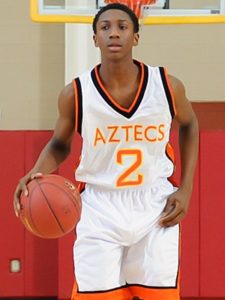

Congratulations to SportsForce client Saben Lee. Saben is a 2017 Point Guard from Phoenix, AZ. We began introducing Saben to college basketball coaches in his sophomore year of high school. Within about the first year of our working together, Saben received more than 20 Division I offers, including Stanford, Nebraska, Louisville, Utah, Pepperdine, Boise State and many others. His final commitment was made to Coach Bryce Drew at Vanderbilt University of the SEC.
Regardless of your sport, the 5 Critical Elements to Securing Multiple Offers include:
- Good Communication: top college recruits understand how to effectively communicate with college coaches by asking strategic questions that uncover a coaches’ true interest in them, while also being uniquely prepared for those questions college coaches will ask of them.
- Appropriate Target-Lists: top college recruits focus on proper target-list schools and sports programs that match their athletic and academic skill-set, instead of wasting valuable time and energy on collegiate opportunities that most likely will never be realized.
- Take Control: top college recruits avoid the trap of relying solely on external factors to generate offers, such as assistance from high school or club team coaches, and only attending viewing tournaments, or camps in order to be “seen” or evaluated by college coaches.
- Stay Disciplined: top college recruits prepare for, and are diligent in the use of appropriate follow-up strategies with college coaches, even when some opportunities appear to be going nowhere. They spend time researching best-fit schools and make it easy for coaches to communicate with them.
- Game Plan Execution: top college recruits learn the importance of creating and then executing a well-thought out plan to beat the competition, and the competition is fierce in order to achieve your college recruiting goals. They know the absence of a well-developed plan creates uncertainty, misdirection and lost recruiting opportunities.
Are College Coaches Really Recruiting You?
Posted by SportsForce in College, Inspiring Stories, Recruiting, Tips & Advice, tags: athletic scholarship, college coach, college recruiting, college recruiting game plan, college recruiting mountain, college recruiting process, high school student, official offer, recruitment, scholarship, sportsforce, student athleteWhen a student-athlete becomes serious about playing their sport in college, it helps to understand when a college coach is truly recruiting them. Many families have difficulty interpreting the various types of correspondence from college coaches. They just can’t tell the difference when a coach is genuinely interested in developing a relationship versus one who is just marketing their school’s sports program.
Understanding this difference is not only vital to your success, it saves you valuable time, money and resources on chasing opportunities that will never be realized. When your efforts are focused on the coaches and schools that really have an interest in you, the results tend to reflect more offers, higher scholarship amounts and a shorter recruiting cycle.
At SportsForce, we like to help our families visualize this process. The diagram below shows a person climbing a mountain. This represents your son or daughter. They’re ascending the college recruiting mountain with possibly several hundred thousand other student-athletes also competing for a college roster spot for their particular sport. But on average, only about 5-6% of those few hundred thousand make it to the top of the mountain with an offer or scholarship.
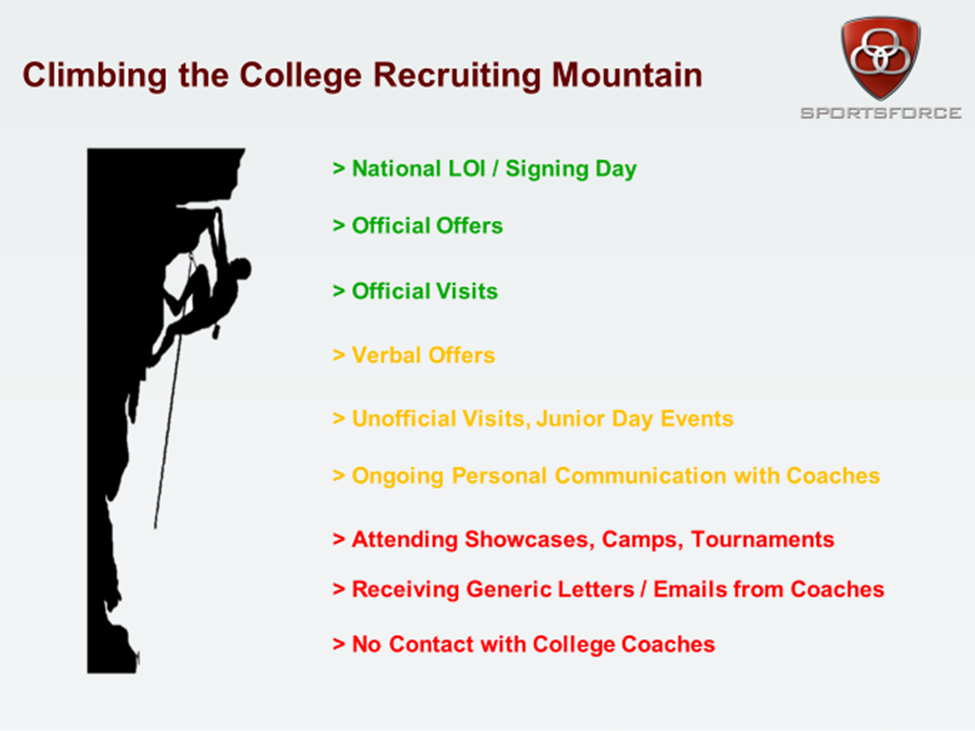

The areas listed on the right are the basic steps and communication that takes place along the way. More specifically, the areas in red are what we call “Base Camp One” on the mountain. That’s where a lot of student-athletes stop in terms of their college recruiting. At this point, they have no contact with college coaches. Another key indicator of being at Base Camp One is they might attend or be invited to a big tournament, combine or camp. They might also receive generic emails, questionnaires or form mailings from a coach. But that’s about as far as it goes. The red color means they have not advanced their recruiting progress.
The key to knowing when you’re being “actively” recruited, is when your son or daughter have an ongoing personal dialog with a college coach. The area in yellow highlights some of these types of activities and communication. If they’re receiving personal texts, phone calls, emails or hand-written notes, this means they’re being actively recruited. If they are invited for an unofficial visit or Junior Day event, this also aligns with active recruitment. The yellow color means caution. Just because your student-athlete is actively communicating with college coaches does not automatically mean they will receive a written offer from them. College coaches are also pursuing other players, not just your son or daughter.
Once in the green area, student-athletes (if they have not already) may begin receiving verbal offers. Those may lead to further official visits, which may produce written offers and ultimately a signed National Letter of intent. The green color means go and your student-athlete is receiving offers and probably achieving their college recruiting goals.
Where is your son or daughter on the college recruiting mountain? Do they need assistance in building personal relationships with college coaches or deciphering their communication?
Contact us today for a personal college recruiting evaluation. Our highly trained team of college recruiting advisors have either played or coached their sport at the college level. Our entire team of professionals dedicates their passion, time and attention to properly evaluating, educating and successfully guiding qualified student-athletes and their families through the college planning and recruiting process.
For a personal college recruiting evaluation and honest estimate of your potential to compete at the next level, contact us at:
Phone: 1.888.9787084
Email: scouting@sportsforceonline.com
How do you pursue your life goals?
Posted by SportsForce in College, Inspiring Stories, Planning, Video, tags: Andrew Beinbrink, college recruiting process, Dreamchasers, entrepreneur, faith, gameplan, Lucas Barra, sportsforce, student athleteLucas Barra, a former team member of SportsForce, created Dreamchasers to help give millennials the tools, resources, and inspiration to create a life of their dreams. The Dreamchasers podcast is the place to go to get inspired, hear from the upcoming stars like you, pursue your life goals, and help you take your life to the next level.
For their first podcast, Lucas interviewed our CEO, Andrew Beinbrink, regarding entrepreneurship, goals in life and his passion for helping student-athletes reaching their goals.
In the interview, Andrew gives tips on navigating the recruiting process for student athletes, how to set life goals, and creating great habits. He emphasizes how important it is to ask for help when you need it, as well as, creating a game plan in order to achieve the goals you’ve set for yourself. Further, he explains that the first step to being successful in life is to have faith in yourself. He recommends to always see yourself at your best because when you re-engineer your self-image, it improves your energy, how you connect with other people and how you show up in relationships and in life.
Here are a couple more key tips Andrew goes over regarding the college recruiting process:
– You must build the faith muscle to be successful. We underestimate the importance of faith in creating a winning mindset. Create affirmations around building faith and utilize them on a regular basis. For example, “I will have a successful phone call with this client”. Repeat a few times and it will help to increase your faith
– The college decision is one of the most important decisions in someone’s life. Take the time to make the right choice for you.
– We are all entrepreneurs at heart. If you can take ownership as the CEO of your life and build from the inside out, success will come.
You can check out more informative and inspirational content on the Dreamchasers website.
Successfully Managing Your College Recruiting Process
Posted by SportsForce in College, Inspiring Stories, Prep, Recruiting, Tips & Advice, tags: academic scholarship, college offer, college recruiting, college recruiting process, high school sudent, inexperienced approach, professional approach, sport scholarship, sportsforce, student athlete

What does it look like when a professional and those with less experience try to secure college offers, earn significant scholarships and play their sport in college?
Let’s highlight some of the key differences in the two approaches.
Professional Approach
- Meets with certified counselor to ensure high school courses are in line with NCAA core course eligibility.
- Analyzes best classes to take in order to maximize GPA while maintaining an appropriate strength of subject content. This is based on the academic requirements of their college target list.
- Analyzes and determines the best test to take (either SAT or ACT) based on individual strengths and focuses on studying for one test. Uses professional help/guidance in studying for tests.
- Receives proper athletic evaluation. Creates and executes a customized game plan to begin the recruiting process. Targets appropriate colleges that match student-athletes academic, athletic, geographic and financial desires and abilities. As a result, enjoy shorter recruiting cycles. Begins in the freshman or sophomore year.
- Develops ongoing and strong personal relationships with multiple college coaches. Makes it easy for college coaches to communicate and interact with them. Understands when a college coach is genuinely interested in them, or if the coach has no interest in making them an offer.
- Executes their game plan and secures multiple offers from best-fit schools.
Inexperienced Approach
- Does not understand core course NCAA eligibility requirements. Does not regularly meet with certified counselor to properly track high school course load.
- Only takes mandatory courses or classes of interest with no link to specific target college academic requirements.
- Studies for, and takes both the ACT and SAT tests. Then determines what might be the best test to take again. Does not use prep testing services.
- Sits back and waits for college coaches to contact them. Hopes to be discovered by college coaches at a camp/tournament/showcase. Rely on outside factors such as club or high school coaches to help them be recruited. Receives and acts on poor advice from well-intentioned people. Gets serious about recruiting late in the junior or senior year.
- Wastes time trying to communicate with coaches that have no desire in recruiting them
- Wastes a lot of money and time on attending multiple camps/tournaments with no idea if these are the appropriate ones to participate in.
- May secure an offer from a school they are not strongly interested in, or may not secure any offers at all
Managing the recruiting process like a professional is not easy. Most know that they will experience this event only one time and making mistakes are costly. It’s competitive and hard work. It requires focus, sacrifice, determination and the appropriate resources. The professional is prepared and committed to achieving their goals over the long haul.
Inexperienced people typically do not take control of the recruiting process. They usually fall short of achieving their college recruiting goals. They lack a well-conceived game plan and find it difficult to execute basic strategies. They typically repeat activities that are ineffective and unsuccessful. Inexperienced families and student-athletes do try their best. Even though they sometimes may achieve incremental gains, much of their success is left entirely to chance.
Of the 8 million students playing their sport in high school, approximately 94% or 7.5 million never go on to compete in their sport in college. The competition is too fierce, the roster spots and scholarships are too limited, the process is too complex, the college recruiting budgets are too small and the stakes are too high to manage this process without the necessary tools, guidance and professional support.
You don’t have to go it alone. As the nation’s premier college recruiting advisory group, SportsForce provides families with a highly trained team of college recruiting advisors who have either played or coached their sport at the college level. Our entire team of professionals dedicates their passion, time and attention to properly evaluating, educating and successfully guiding qualified student-athletes and their families through the college planning and recruiting process. We can help you too.
For a personal college recruiting evaluation and honest estimate of your potential to compete at the next level, contact us at:
Phone: 1.888.9787084
Email: scouting@sportsforceonline.com
Matt Stearns Feature Athlete Interview – Committed to California State University, Dominguez Hills
Posted by SportsForce in Baseball, College, College Feature, Commitments, Commitments, Recruiting, SoCal, tags: advice, baseball recruiting, California State University, college baseball, college commitment, College Sports Recruiting, Dominguez Hills, recruiting story, sport scholarship, sportsforce, student athlete, Toro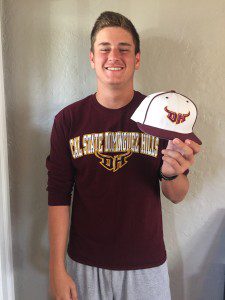

Recruiting Budgets Significantly Impact Your College Offers
Posted by SportsForce in College, Inspiring Stories, Recruiting, Tips & Advice, tags: College Coaches, college evaluation, college offers, college recruiting budget, college scholarship, college sport, High School, high school recruit, recruiting budget, sportsforce, student athlete, targeting schools, university funds

According to the Department of Education, the average recruiting budget for FBS men’s sports programs is $700,000.00.
Think about that for a minute. A major NCAA Division I athletic program will spend an average of $700,000.00 on the recruiting efforts for ALL of its men’s sports programs.
What’s rarely mentioned is that football and men’s basketball will consume about 50% or $350,000 of that budget. That leaves an average of only $50,000 for each of the remaining sports programs like baseball, golf, lacrosse, swimming/diving, tennis, soccer, track/field & cross country to secure recruits.
If a college or university funds additional men’s sports like water polo, wrestling, and hockey, the recruiting budgets are even further diminished. But each program is not evenly funded so many sports may receive much less than $50,000 to recruit high school student-athletes.
Important note: women’s sports programs usually average substantially less in recruiting budgets than men.
Here are the average men’s teams recruiting expenditures by the conference for 2013-2014 (take notice of all the number of programs in major conferences below the $700K average):


Given these figures, it’s easy to understand why college sports programs have a difficult time locating and evaluating all of the talented high school student-athletes in the U.S and abroad. They simply do not have the resources to accomplish the task. This is even more evident if you compete in a sport outside of football and basketball.
Here are 3 steps to overcome the limits of college recruiting budgets:
- Be properly evaluated and start targeting schools that match your athletic, academic, financial and geographic goals.
- Don’t wait to be contacted by college coaches. Create an appropriate game plan to begin personally introducing yourself to coaches at proper fit schools.
- Begin building and sustaining personal relationships with college coaches over an extended period of time in order to secure offers from best-fit schools.
Understanding the limitations of college programs to recruit high school student-athletes and executing a well thought out game plan may produce outstanding results in your goal of playing your sport in college.
Over the last five years, SportsForce has helped over 1,000 student-athletes and families successfully navigate the college recruiting and athletic scholarship process while saving families on average $50,000 in college expenses.
Cameron Parmigiani Feature Athlete Interview – Committed to University of St. Francis
Posted by SportsForce in Basketball, Blogs, College, College Feature, Commitments, Commitments, Recruiting, tags: Actively Recruited, athletic scholarship, college basketball, college commitment, College Sports Recruiting, fighting saint, Recruiting, sportsforce, SportsForce team, student athlete, University of St. FrancisWe would like to congratulate Cameron Parmigiani on his commitment to University of St. Francis! Here are Cameron’s recruiting story and interview after his commitment. Good luck as a Fighting Saint!
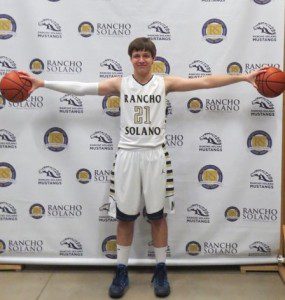

1. Share your recruiting story and status
I started working with SportsForce during the summer between my Junior and Senior years of high school. After their evaluation, I was told that I would likely play NAIA or NCAA D3 college basketball. My first introduction to college coaches was on the very first day of my Senior Year of high school. I had about 40 responses from college coaches. I began narrowing down these schools, with SportsForce’s help, of course. They guided me through the process, gave me advice on how to properly communicate with the college coaches who were interested in me. They were there every step of the way. I ultimately narrowed my list down to about 7 schools. It was then when I began making official visits to schools, doing overnights at the campuses with the basketball teams, and having lengthy calls with the coaches to discuss the possibilities for my future as a student-athlete. On March 26, 2016, I signed with the University of St. Francis men’s basketball team, committing to them, reserving my spot on the team, and accepting the athletic scholarship money they offered me. Being a dedicated student, I also received a significant academic scholarship as well…
2. What school are you going to, and why did you choose them?
Next year, I will be attending the University of St. Francis, in Joliet, Illinois. I chose them for their location, school size, feel of the school, athletic prowess, and relation to the coaching staff.
3. How did SportsForce help in the process?
SportsForce helped guide me through the minefield of the college athletic recruiting process by telling me how to handle business, and how to approach the coaches with questions or concerns I may have had.
4. What advice would you give to other players and parents with the recruiting process?
I would definitely recommend that perspective college student athletes get a head start, earlier than I did, in order to get the roster spot they may deserve before it fills up. The highlight video was a notably big part of my recruitment, so I absolutely would recommend that as well. One piece of advice for them, though, would be to choose a school where you could also see yourself attending without playing your sport. Say you get severely injured after your first year, you don’t want to be stuck there; unhappy, and have to transfer and begin the search again. Just something to think about.
5. How excited are you for your future in college?
I am STOKED for my college basketball career, and I know that I have chosen the right school for me!
6. How much money do you anticipate your family saving in college expenses because of you being recruited?
Because of the help from SportsForce, we will be saving over 50% of our college costs through my athletic and academic scholarships.
7. Would you recommend SportsForce to any other student-athletes? Why?
Yes. I would recommend it. I had no idea where I wanted to go to college at the start of my senior year of high school, which was very stressing and intimidating. SportsForce helped me find schools that wanted me, and I went from there! 🙂
Over the last five years, SportsForce has helped over 1,000 student-athletes and families successfully navigate the college recruiting and athletic scholarship process while saving families on average $50,000 in college expenses.





